|
Monday 22nd to
Sunday 28th November 2021 |
| |
|
Ceres is the largest object in the Asteroid
Belt that orbits between Mars and Jupiter. It was the very first asteroid
discovered there back in 1801. It has a diameter of almost 1000Km and as a
result, it was originally classified as a planet. By the 1850s, lots more
asteroids had been found so Ceres was re-classified as a "big asteroid"!
|
| |
|
Then in 2006 the International Astronomical
Union had a big debate about the definition of a planet. Pluto was
re-classified as a "dwarf planet" and at the same time, Ceres became one of
those too! |
| |
|
Ceres is usually very difficult to locate in
the night sky and because of its size, never reflects enough light to be
seen with the naked eye. Next week it happens to be at its brightest,
around a magnitude of +7, so you should be able to see the dwarf planet with
binoculars. |
| |
|
To find Ceres, from about 8pm, look to the
east and locate the constellation of Orion. Draw an imaginary line from
Orion's Belt up towards the Pleiades cluster and half way along is the
constellation of Taurus. As well as containing the bright star Aldebaran,
the centre of Taurus contains the Hyades open cluster of stars and Ceres is
currently located between two of those stars - Hyadum I and Hyadum II. |
| |
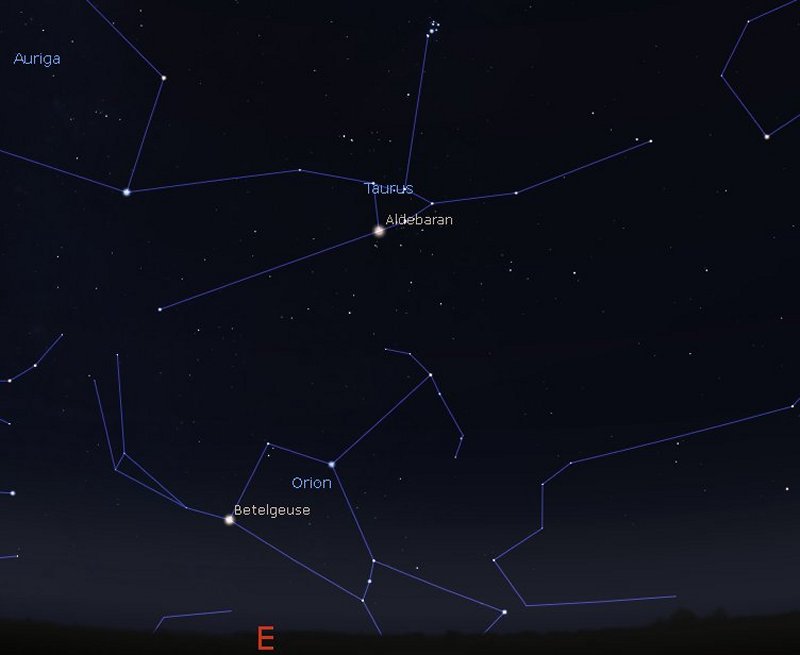 |
| |
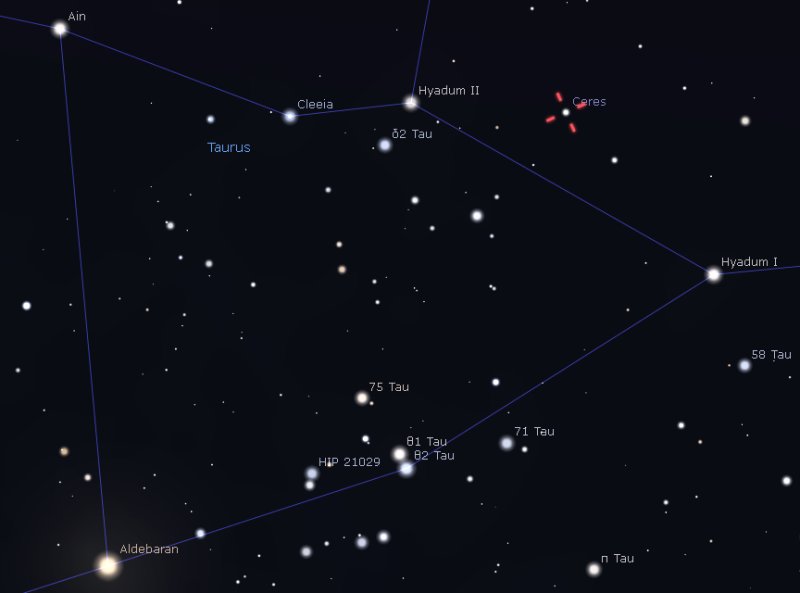 |
| |
|
The best evening to try is Saturday 27th when
Ceres is at opposition or in other words, closest to the Earth and at its
very brightest. |
|
Monday 15th to
Sunday 21st November 2021 |
| |
|
We'll start the week with a bit of a
challenge - have a go at trying to find the planet Uranus. If you look
directly east at 6pm on Monday 15th, the planet will be located to the right
and slightly up from the constellation of Taurus and the Pleiades cluster of
stars. |
| |
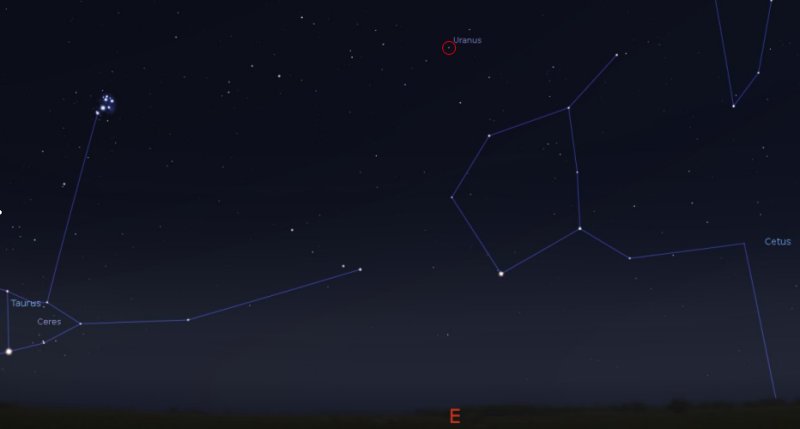 |
| |
|
The planet currently has a magnitude of
around 5.7 so it should be possible to spot it with binoculars. Using a
telescope will reveal its turquoise colour. |
| |
|
Uranus is the seventh planet from the Sun, 2
billion miles away and the planet takes 84 years to orbit the Sun where we
only take 365 days! It is composed mainly of Hydrogen and Helium and is the
coldest planet in our Solar System with a minimum temperature of -224
degrees Celsius. |
| |
|
William Herschel discovered Uranus back in
1781. It had been observed many times before then, but everyone thought it
was a star. The Voyager 2 space probe imaged the planet in 1986 and
revealed it to be almost featureless with none of the storms or bands of
clouds associated with the other gas giants. Uranus is unique in that it
spins on its side or in other words, its north and south poles are actually
east and west! |
| |
|
The morning of Friday 19th sees a Full Moon
and partial Lunar eclipse. If you look to the west from about 6am, the Moon
will be setting and partially eclipsed by the Earth's shadow. The effect is
most noticeable from 7am, just before moonset. |
| |
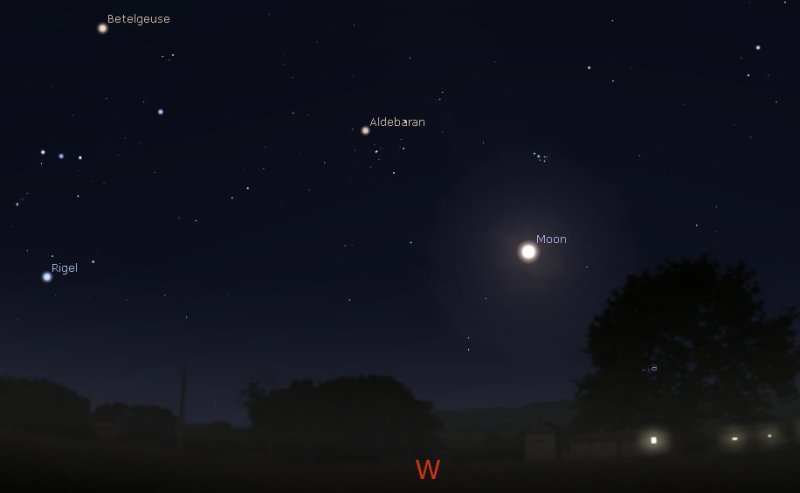 |
|
Monday 8th to
Sunday 14th November 2021 |
| |
|
On Monday 8th if you look towards the south
west horizon around 6pm, after the Sun has set, there is the chance to see a
bright planet Venus shining at magnitude -4.4 slightly to the right of an
11%-lit Waxing Crescent Moon. |
| |
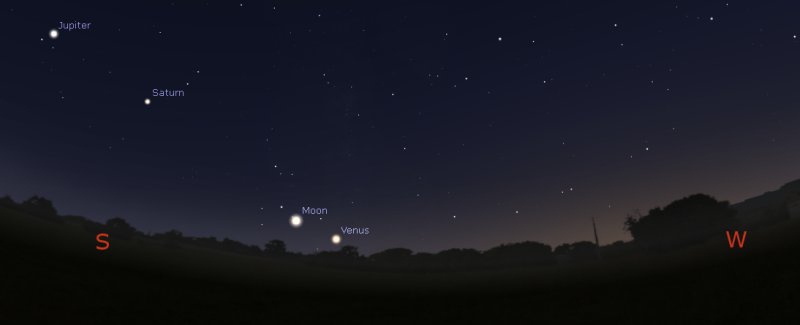 |
| |
| |
|
The following evening, Tuesday 9th, telescope
users have the chance to spot the shadow of Ganymede, one of Jupiter's
moons, transiting across the planet's disc. You'll need to be aiming at
Jupiter towards the south just after it gets dark and you will have to be
quick as the event is all over by 6.40pm. |
| |
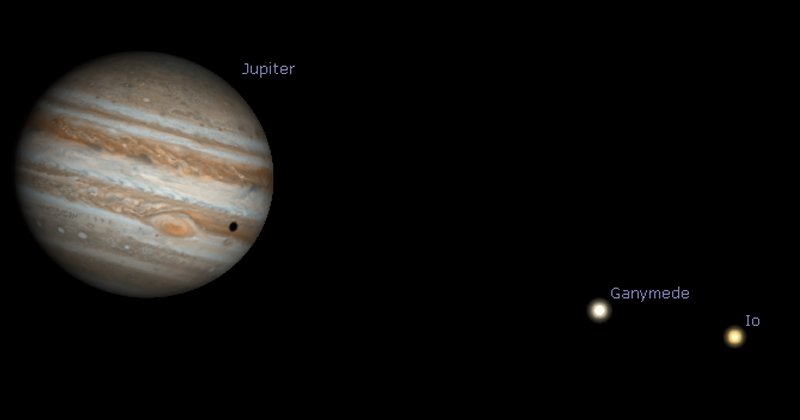 |
| |
| |
|
A couple of weeks ago I mentioned
"clair-obscur" visual effects when observing the Moon. On Thursday 11th
there is the opportunity to see two of these effects known as the Lunar "V"
and "X". They are most visible from around 10.30pm just before the First
Quarter Moon sets in the south west. |
| |
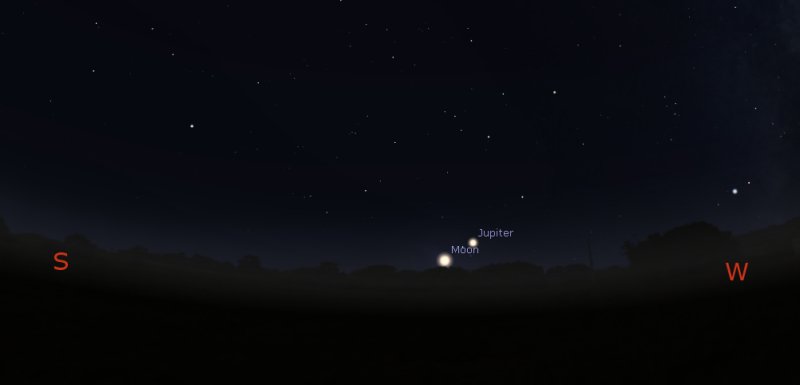 |
| |
| |
|
To help you find them, below is a map of the
different clair-obscur effects and photographs of the "V" and "X" courtesy
of Sky at Night Magazine and Pete Lawrence. |
| |
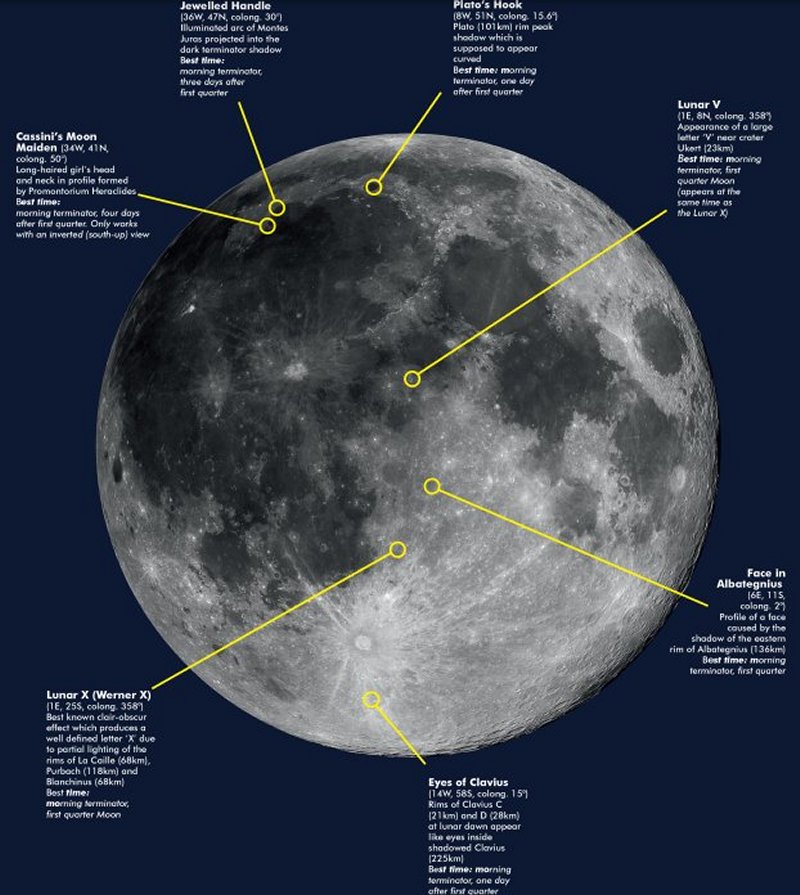 |
| |
| |
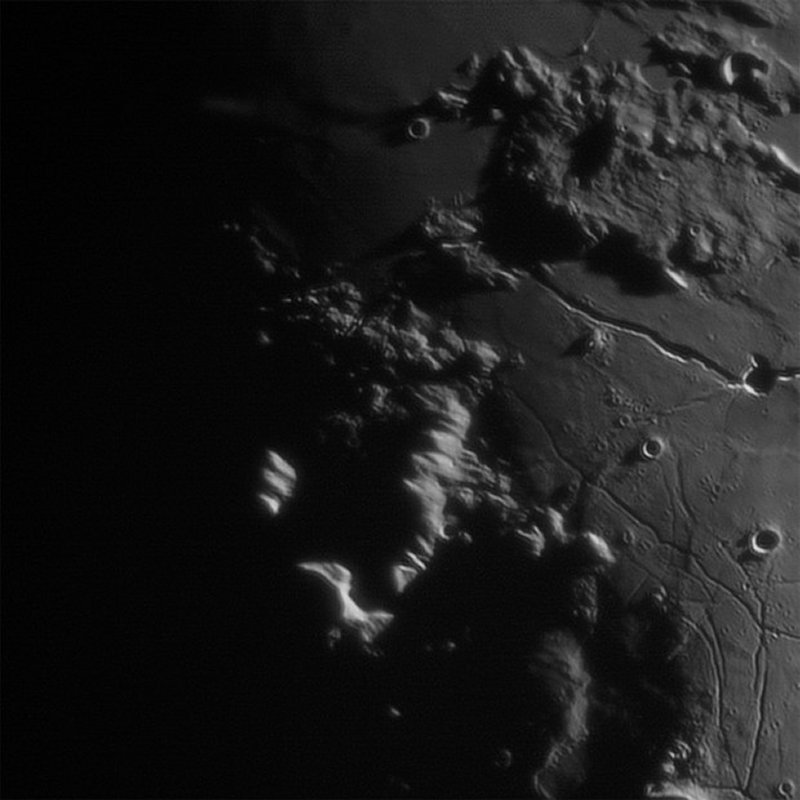 |
| |
| |
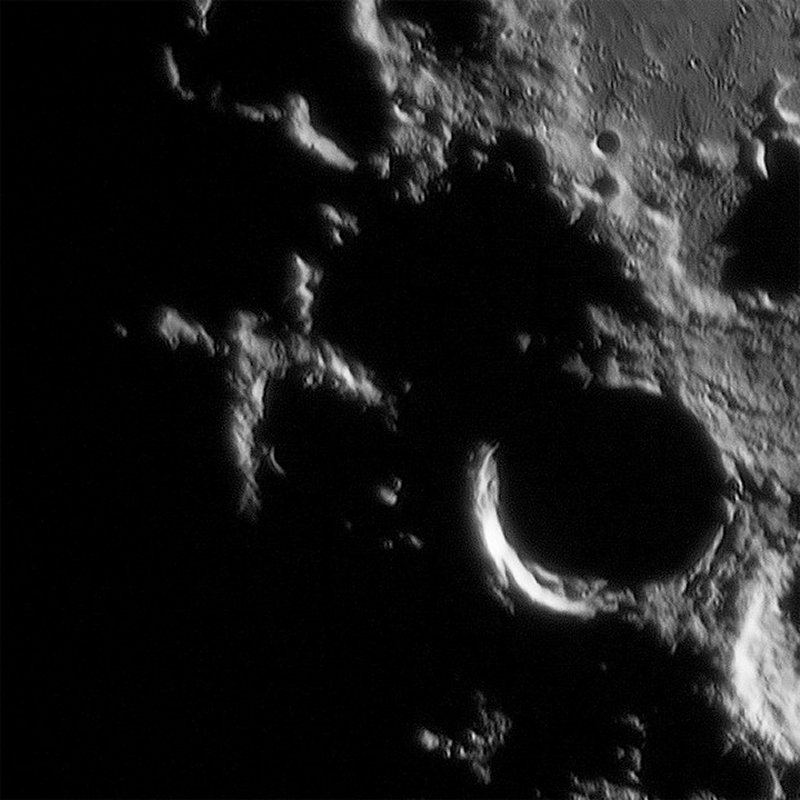 |
| |
| |
|
Finally, the night of Thursday 11th into the
morning of Friday 12th sees the peak of the Northern Taurids meteor shower.
Best viewing is from midnight, so really the early hours of the Friday
morning. The radiant point of the shower is right of Taurus and the
Pleiades cluster, towards the south if you start looking from midnight. |
| |
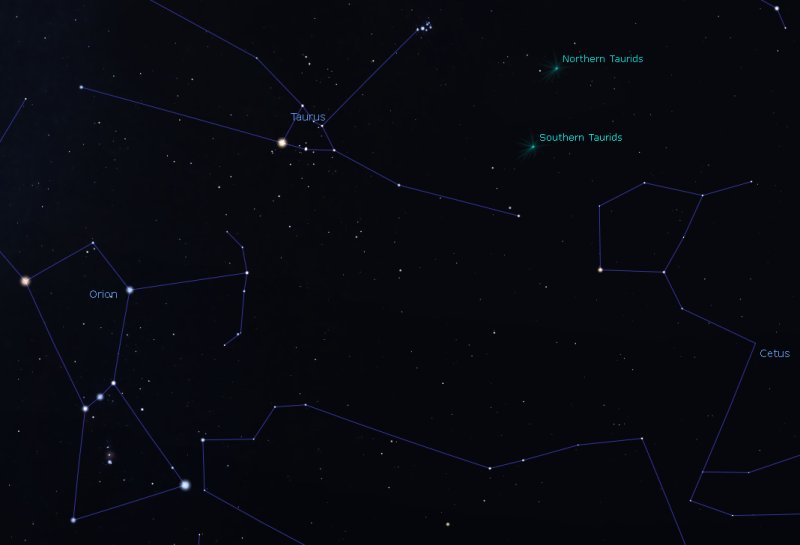 |
|
|
|
The shower has an hourly rate of only five
meteors, but the trails look very bright because they are travelling
relatively slowly at only 65,000 miles per hour! |
|
Monday 1st to
Sunday 7th November 2021 |
| |
|
When you look at the Moon, one of the most
obvious features are the dark, flat areas that early astronomers used to
think were seas or oceans. Probably the most famous is Mare Tranquilitatis
or the Sea of Tranquility where Apollo 11 landed back in 1969 and Neil
Armstrong took his first steps. |
| |
|
The Moon's orbital period around us and its
rotational period are the same - this means that the same side of the Moon
is always facing us and the "dark side" is always pointing away from the
Earth. The Moon also experiences "libration" which is best described as a
small rocking motion, so sometimes you can see a bit further round what is
normally the dark side. |
| |
|
Monday 1st November gives you the opportunity
to try spotting the Mare Orientale or Eastern Sea, confusingly located on
the western edge of the dark side. It is an impact basin, created by an
asteroid hitting the Moon about 3 billion years ago. When viewed from above
it resembles a bull's-eye, but you will only be able to see it almost
sideways-on. |
| |
|
The 17%-lit Crescent Moon rises above the
horizon in the east a little before 3am on 1st and to make it easier to find
Mare Orientale, I have added a diagram showing its location courtesy of
Wikipedia and an image of what the bull's-eye looks like from overhead,
courtesy of NASA and their Lunar Orbiter 4 space probe. |
| |
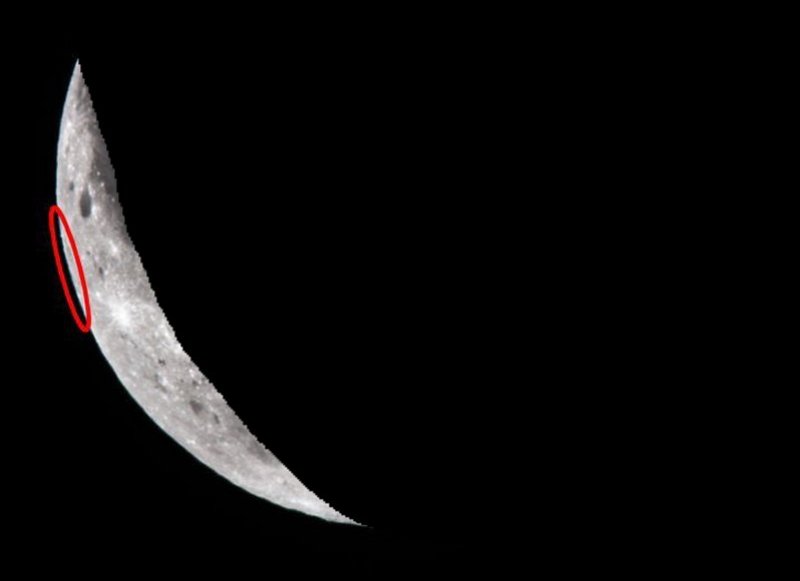 |
| |
| |
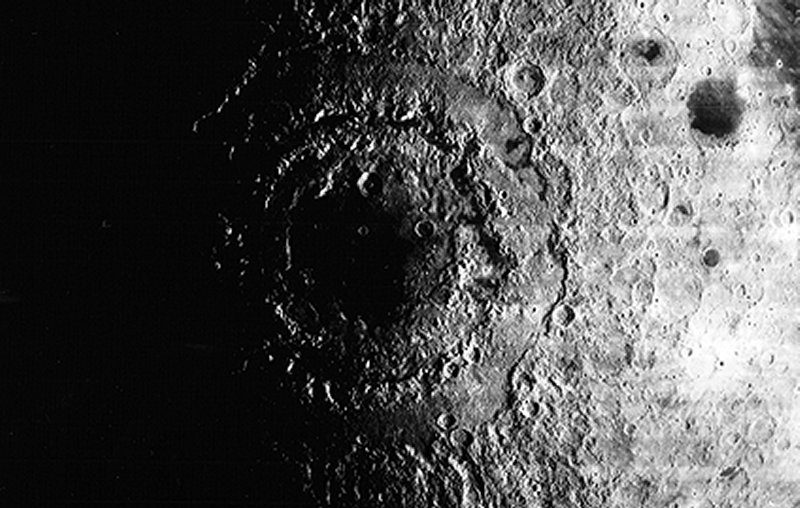 |












